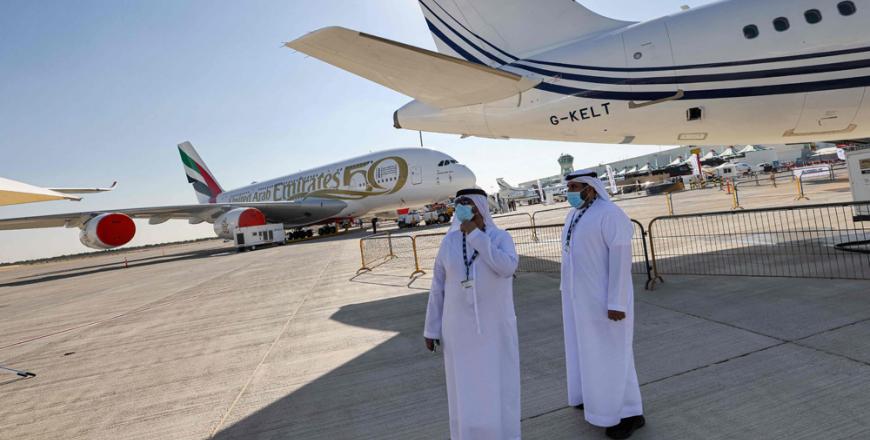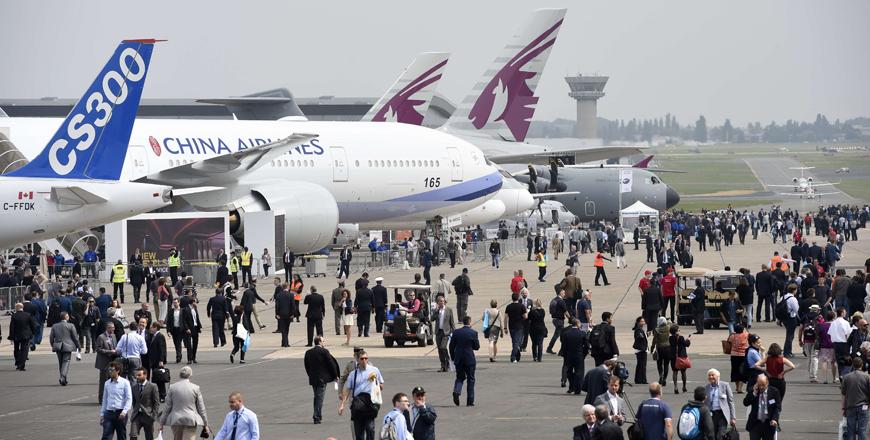SINGAPORE — Top Asian airlines’ profit margins are being eroded by a struggling air cargo business, even as they capitalise on increasing passenger demand, industry executives said Sunday.
Languid global economic growth and freight capacity oversupply brought on by new deep-bellied planes is hammering carriers with dedicated cargo businesses, the insiders said ahead of the Singapore Air Show.
“The biggest worry of the airlines industry right now is probably cargo,” Tony Tyler, director general of the International Air Transport Association (IATA), told reporters in the city-state.
“For the big airlines in this region [Asia] it is a very important component of their revenue mix,” he said.
Asia’s biggest aerospace and defence show opens on Tuesday and will run until Sunday.
Last week, IATA said airfreight traffic rose by 1.4 per cent in 2013 compared to the previous year, supported by rising activity from Middle Eastern and Latin American carriers.
Asia-Pacific carriers, which have nearly 40 per cent of the global freight market, however saw volumes drop 1 per cent, while capacity rose 0.8 per cent.
Passenger demand rose 5.2 per cent compared to 2013 while capacity rose 4.8 per cent. Bigger planes are catering for a growing number of passengers.
Andrew Herdman, the director general of the Association of Asia Pacific Airlines, said major regional airlines with separate cargo businesses are bearing the brunt of the slump in the industry since the 2008 global financial crisis.
“The people who are really suffering in the cargo business are the ones operating big fleets of dedicated freighters and that includes Singapore Airlines, Cathay Pacific, Korean Air, among others,” Herdman indicated.
Singapore Airlines’ freight arm SIA Cargo operates nine Boeing B747-400 freighters. Cathay Pacific has a fleet of 25 freighters while Korean Air has 26, according to the data on the carriers’ websites.
IATA’s Tyler said full-service carriers could boost revenue by capitalising on growing demand for ancillary services such as a la carte food on planes.
According to IATA, revenue from ancillary services per departing passenger is likely to rise to around 10 per cent this year, from zero per cent in 2007.
Tyler also said it was too early to tell whether the airlines industry would be affected by the recent sell-off in emerging markets.
Commercial deals potentially worth billions of dollars are expected to be announced at the six-day Singapore Air Show.
Vietnam’s first private airline, VietJetAir, is expected to announce the finalisation of an order for 62 Airbus A320 planes worth $6.1 billion, an industry source close to the deal said.
An order for 20 Airbus A380 superjumbos worth $8.0 billion by leasing group Doric Asset Management could also be announced, the source added.
Around 1000 companies are participating in this year’s edition of the event, which occurs every two years.
The total value of deals during its 2012 edition reached $31 billion, up threefold from 2010, organisers said.
Separately, low-cost carriers are flying high in Southeast Asia on the back of sharp growth in air travel, but as hundreds of new jets swarm into the region concerns are rising about its ability to absorb the record numbers of planes on order.
Southeast Asian carriers have been devouring as many new airplanes as planemakers can sell, gambling that low fares and rising disposable incomes will drive the region’s 600 million-strong population to keep flying to new destinations.
An aircraft buying binge fuelled by cheap interest rates and backed by Western export credits shows few signs of halting, with Vietnam’s VietJetAir and Thailand’s Nok Air both expected to place orders at the Singapore Air Show this week.
But after years of explosive growth, the region’s budget carriers are now facing fears of overcapacity as deliveries accelerate, airlines expand into each other’s markets and currency weakness threatens to puncture economic growth.
“This is the only region in the world where airlines have more orders than current fleet and there’s more to come,” said Brendan Sobie, chief analyst at industry consultancy CAPA.
Airlines in Southeast Asia are estimated to have a fleet of 1,800 by the end of this year, he added, while their order book is set to surpass the 2,000 mark. Asia-Pacific planes on order make up 36 per cent of the world total and the figure is rising, says Airbus.
Already last year, available capacity grew faster than passenger demand in countries such as Malaysia, the Philippines and Singapore, putting pressure on yields or the average revenue per passenger for every kilometre flown.
That could extend further in 2014 as carriers in Southeast Asia take delivery of about 230 aircraft worth over $20 billion this year, at a rate close to one new jet every working day.
One such aircraft is a short-haul Boeing 737 now making its way to the region and due to reach Singapore’s SilkAir in time to be shown off at the February 11-16 air show.
The arrival of the airline’s first Boeing symbolises a price war between planemakers generated by Asia’s order boom, after SilkAir ditched its previous supplier Airbus.
Order now, pay later
One reason many airlines have been ordering at once is that engine improvements now allow significant fuel savings.
Ample liquidity provided by money-printing central banks has also made it easier to fund the relatively small upfront payments needed to place headline-grabbing plane orders.
But bankers warn the race to buy efficient aircraft in anticipation of high demand could spell trouble for the sector.
“When you run an airline, for reasons which are both economic reasons and prestige, you want a new kit, so you order an aircraft. And if your neighbour orders aircraft, so you order aircraft,” said Bertrand Grabowski who heads German bank DVB’s aviation and land transport finance divisions.
“I wouldn’t call it irrational exuberance but clearly everybody in Asia is ordering aircraft more than they really need,” Grabowski told Reuters in an interview.
Most of the aircraft orders come from the region’s two fastest growing airlines — Malaysia’s AirAsia Bhd, run by entrepreneur Tony Fernandes, and Lion Air, co-founded by Indonesian businessman turned politician Rusdi Kirana.
Both carriers have placed orders for hundreds of Boeing and Airbus aircraft valued at tens of billions of dollars as they race to get Asians flying in a region set to overtake the United States as the biggest aviation market.
Others ordering aircraft include Cebu Pacific, Tiger Airways, 40 per cent owned by Singapore Airlines Ltd., Garuda Indonesia’s low-cost unit Citilink, and the Qantas Airways Ltd.-owned Jetstar and its affiliates such as Singapore-based Jetstar Asia.
In the event that any airline cannot complete an order, there are others waiting in the wings to take their slot.
New deals
While Fernandes has dismissed speculation of an aircraft order bubble in Asia, AirAsia’s profits have taken a knock due to a gruelling price war in its home market, stoked by Lion affiliate Malindo and competition from Malaysian Airlines.
AirAsia has termed competition in Malaysia and Thailand as “irrational”.
Kirana, the head of Lion Air which does not disclose profits, believes consolidation in the sector is “inevitable” given the large number of companies in the low-cost market.
Recently, Tiger Airways agreed to sell its Philippine operations to dominant carrier, Cebu Pacific, and AirAsia’s Philippine unit bought into smaller Zest Air.
Such concerns are unlikely to get much of a public airing at this week’s aerospace event, where deals may be signed for between 100 and 200 jets worth $10-20 billion — albeit far below the record $200 billion seen in Dubai in November.
Manufacturers are perennially upbeat and Boeing is expected to reiterate confidence in long-term Asian demand this week.
“Nobody is going to place a future order unless they know that whatever they are taking in today is being absorbed in the market at a reasonable yield and a reasonable load factor level,” said Dinesh Keskar, Boeing Commercial Airplanes’ vice president, Asia-Pacific and India sales.
“I wouldn’t say the party is ending in the near-term but the rate of growth will slow down,” he added.


















